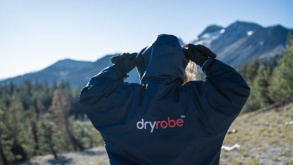Both US courts and the Unified Patent Court (UPC) provide tools for securing evidence. The US provides discovery for foreign litigants under Title 28, Section 1782 of the US Code and the UPC allows parties to request an order to produce evidence under Rule of Procedure 190 (RoP 190).
Understanding Section 1782
Section 1782 gives foreign litigants access to US discovery to obtain evidence that may not be otherwise accessible under traditional European rules of evidence, including financial records, technical specifications, and witness testimony. In practice, a Section 1782 application is a request to a US court – often ex parte – to issue a subpoena, which can include requests for production of documents and/or depositions of witnesses.
Key advantages of Section 1782
As with standard US discovery, Section 1782 can grant access to a relatively broad scope of documents, including documents relating to damages (financials, licences, patent valuations) and infringement (technical drawings, computer-aided design models, product descriptions) but also witness depositions.
The Section 1782 procedure is relatively quick and efficient – in the order of a few months – and requires no prior authorisation from the foreign court. There is no pending litigation requirement, only that litigation be ‘reasonably contemplated’, which means Section 1782 can be used to gather information in support of front-loaded procedures. Unlike a French or UPC saisie, there is no requirement to file an action within a certain number of days after the information is obtained.
Potential limitations
If the statutory requirements are met, US district courts apply non-exhaustive ‘Intel factors’ to determine whether to grant Section 1782 requests. The ‘within reach’ and ‘bad faith’ factors can be particularly relevant for European litigants.
The within reach factor may weigh against granting Section 1782 requests made by a party to a UPC proceeding. Some courts have considered that parties to a UPC proceeding already had a way to obtain materials through RoP 190 directly – although different courts may interpret this factor differently.
The bad faith factor considers whether a party is using Section 1782 to circumvent foreign proof-gathering restrictions. The mere absence of US-style discovery procedures abroad does not constitute circumvention, but a few courts found – where a UPC litigation was pending – that a failure to first seek materials through RoP 190 was evidence of bad faith. Other Intel factors may nonetheless tip the scales towards granting Section 1782 requests, and courts may adapt their approach as they become more familiar with the UPC.
Strategic considerations: Section 1782 v RoP 190
Timing differs significantly between the two procedures: RoP 190 requests can only be filed after UPC proceedings are initiated, whereas Section 1782 applications can be filed at any time, even prior to any foreign proceedings being instituted, providing valuable intelligence-gathering opportunities to strengthen front-loaded UPC cases.
Scope also differs significantly between the two procedures. RoP 190 requests require precise identification of requested evidence and the facts the evidence will prove. UPC local divisions have already rejected RoP 190 requests that were overly broad or failed to indicate what facts the evidence will prove. In contrast, Section 1782 requests typically permit broader categorical document requests and evidence unavailable under UPC procedures, such as US-style depositions. However, where US discovery already exists from an adverse party at the UPC, it could be more efficient to request specific documents such as deposition transcripts under RoP 190.
Practical implications
Section 1782 can be a game-changer in cross-border litigation. It is a powerful tool for non-US litigants to obtain evidence not typically available at home. However, its use must be carefully considered alongside other procedural avenues such as RoP 190, particularly in light of evolving US and UPC case law.












